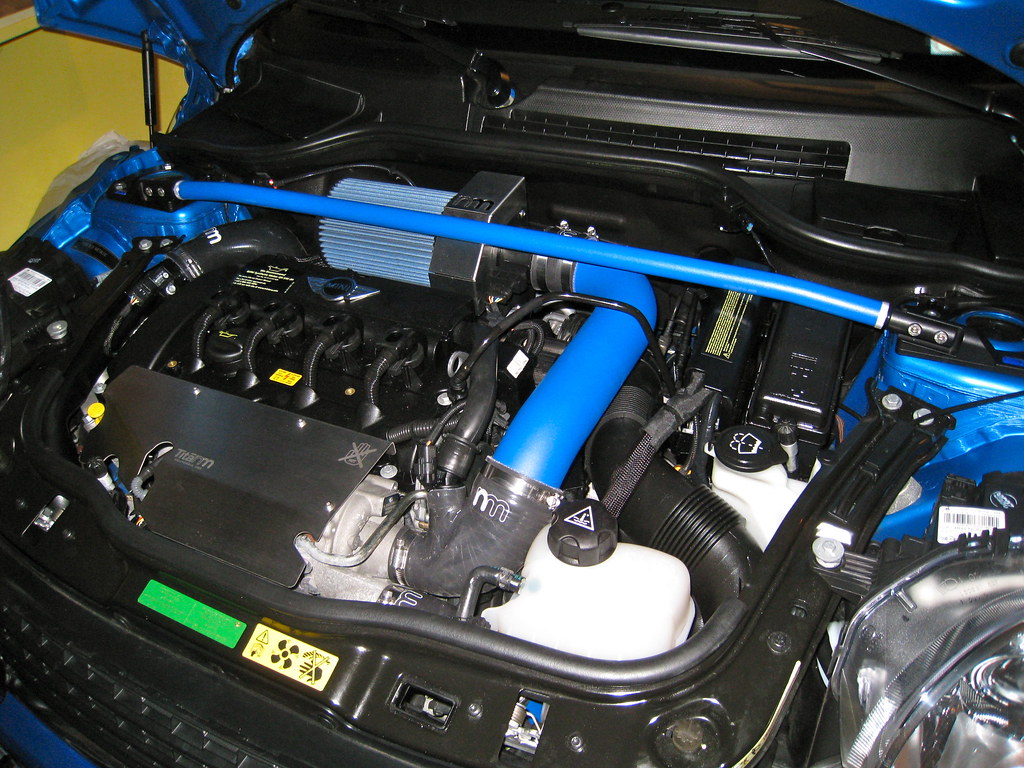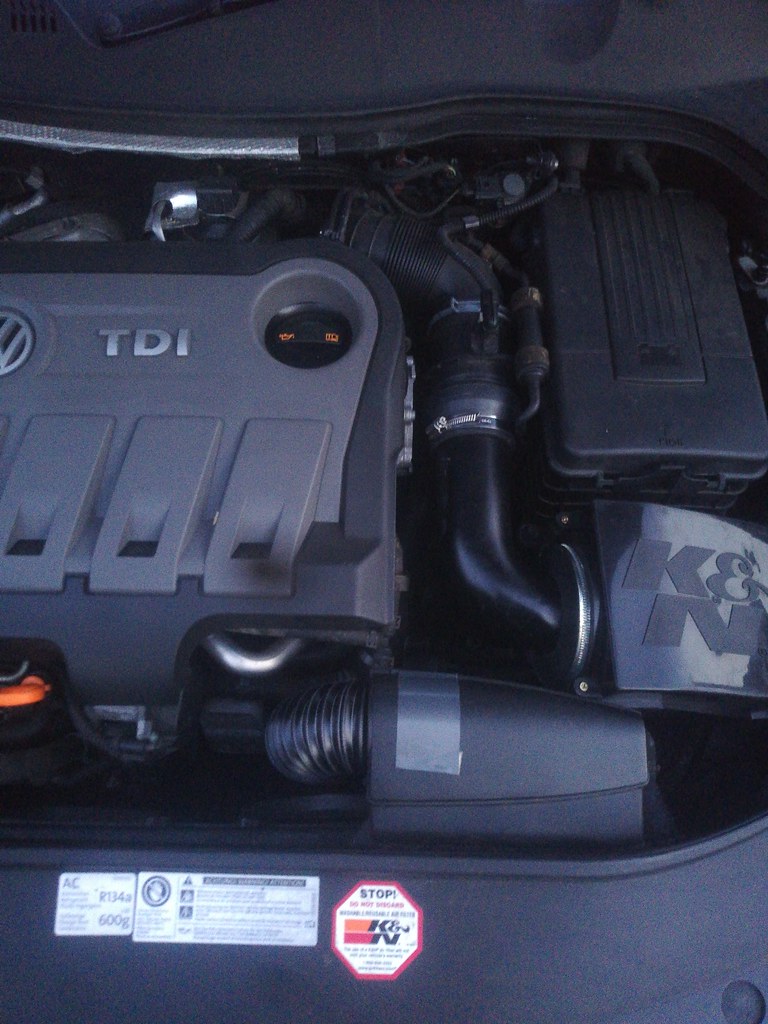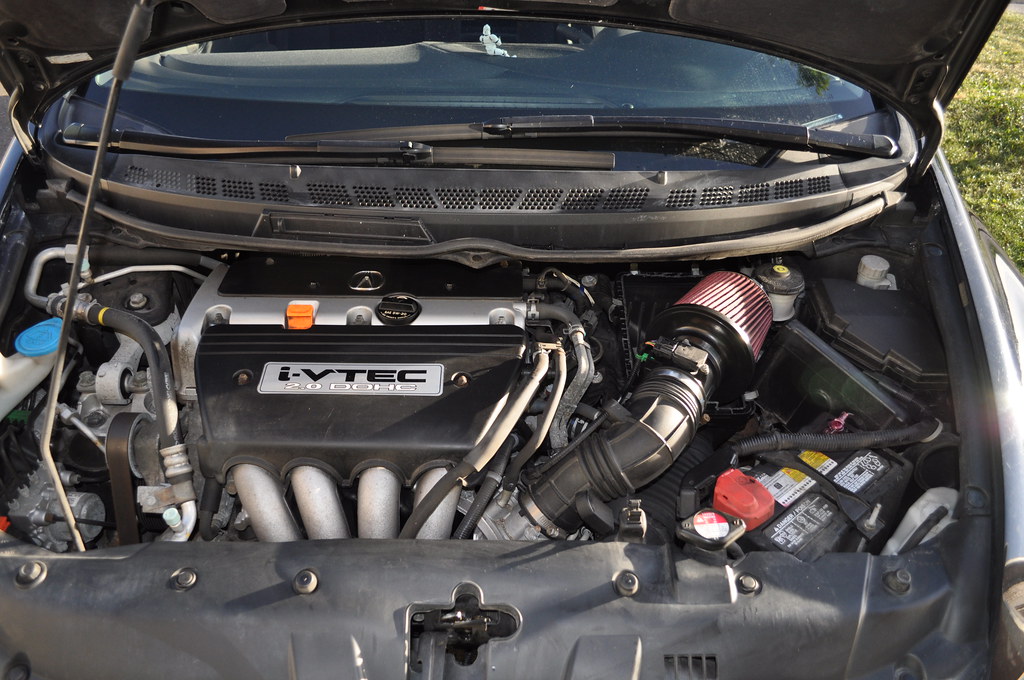Why Install a Car Intake Kit
Summary
Description of the air intake kit
Intake kit usefulness and price
Optimizing the air intake for an internal combustion engine is essential. Indeed, the oxygen contained in the air takes part in the combustion, directly influencing the engine’s efficiency. Consequently, there are air intake kits that are supposed to improve engine filling. Is this a valid operation or not? We tell you everything in this post!
Description of the air intake kit
This is a set of hoses and air filter that replaces the original air intake system. Let’s detail the different components.
Composition of the air intake kit

The air filter element of the air intake kit is specific: made of strips of cotton gauze soaked in oil and separated by aluminum mesh, and exposed to the open air (under the hood). It does not have an air filter housing, unlike the original equipment.
As for the air supply hoses, these intermediate ducts between the air filter and the engine inlet:
– the external air intake and housing no longer exist;
– the original hoses after the filter to the intake manifold (also called distributor, the element that provides the quantity of air necessary for complete combustion of the fuel) are replaced by the straightest and most direct hoses possible;
– you can customize these hoses: different possibilities exist to give a tuning effect (polished effect, silver color, red, blue…).
Usefulness and price of the intake kit
This equipment brings to the vehicles, according to their manufacturers :
– a better air filling thanks to the suppression of the filter box and the original hoses with tortuous design;
– de facto, a better engine operation thanks to a more regular airflow;
– more torque, more power, and more airflow.
Challenging the intake kit
First, we need to clarify what power and torque are:
Power is expressed in kilowatts (or horsepower): the more combustions (related to rpm) in a given time, the more powerful the engine is, the more fuel and air it needs. The consequence is a higher fuel and air consumption, and the design of the air intake is modified: the air pipes must be as short and direct as possible.
Example: this is the case of Formula 1 cars, which are very powerful but require a lot of fuel.
– Torque: Here, the principle is to obtain optimal combustion with the best possible output, i.e., minimum fuel.
Example: production cars. Intake manifold and long hoses with convolutions allow a good air-fuel mixing, thus complete and optimized combustion.
This is why, contrary to what the manufacturers of these kits claim, they have never favored the engine torque.
Consequences of removing the filter box

Filtration is also to be discussed: not only is the filtration power of the intake kit lower than the original one, but the filter element being in direct contact with the outside, it can “swallow” foreign bodies, in particular water.
Note: this is the advantage of the original filter housing, which acts as a decanter to collect all these impurities.
Another aspect, which may not seem important, but which is nevertheless essential, is the noise generated by the intake kit: the filter housing allows, among other things, to attenuate this noise effectively.
Finally, it is mathematical: more power, less torque = additional fuel consumption.
Price of the kit
Despite this, for more subjective reasons related to tuning, noise, or power, you can now fall for this equipment with full knowledge of the facts.
One recognized leader is the filter manufacturer K&N, which offers different kits in a price range from $55 for the simplest (“universal intake kit”) to $700 for the most advanced (“typhoon intake kit”).

